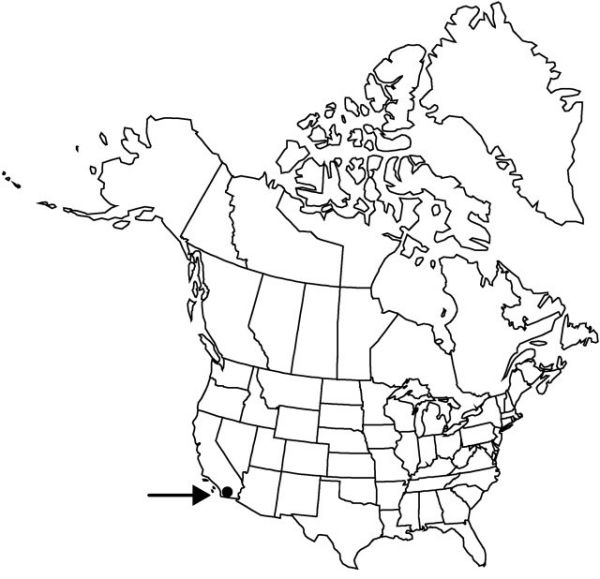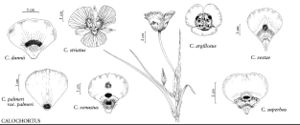Difference between revisions of "Calochortus dunnii"
Proc. Calif. Acad. Sci., ser. 3, 2: 147, plate 19, figs. 14, 17. 1901.
FNA>Volume Importer |
FNA>Volume Importer |
||
| Line 51: | Line 51: | ||
|publication year=1901 | |publication year=1901 | ||
|special status= | |special status= | ||
| − | |source xml=https://jpend@bitbucket.org/aafc-mbb/fna-data-curation.git/src/ | + | |source xml=https://jpend@bitbucket.org/aafc-mbb/fna-data-curation.git/src/8f726806613d60c220dc4493de13607dd3150896/coarse_grained_fna_xml/V26/V26_182.xml |
|genus=Calochortus | |genus=Calochortus | ||
|species=Calochortus dunnii | |species=Calochortus dunnii | ||
Revision as of 16:42, 18 September 2019
Plants rarely bulbose; bulb coat, when present, membranous. Stems slender, usually branching, ± straight, 2–6 dm. Leaves: basal withering, 1–2 dm; blade linear-attenuate, channeled. Inflorescences 2–6-flowered; bracts 1–2 cm. Flowers erect; perianth open, campanulate; sepals lanceolate-ovate, 1–2 cm; petals white, usually flushed pink, with red-brown blotch distal to gland, obovate to cuneate, 2–3 cm, usually rounded distally, with yellowish hairs near gland; glands rounded, not depressed, covered with linear yellow hairs; filaments 5–6 mm; anthers white, oblong, 4–5 mm, apex acute. Capsules erect, linear, angled in cross section, 2–3 cm. 2n = 14.
Phenology: Flowering mid summer.
Habitat: Dry stony ridges in chaparral and pine forest
Elevation: 1500–1700 m
Distribution

Calif., Mexico (Baja California).
Discussion
Of conservation concern.
Selected References
None.
